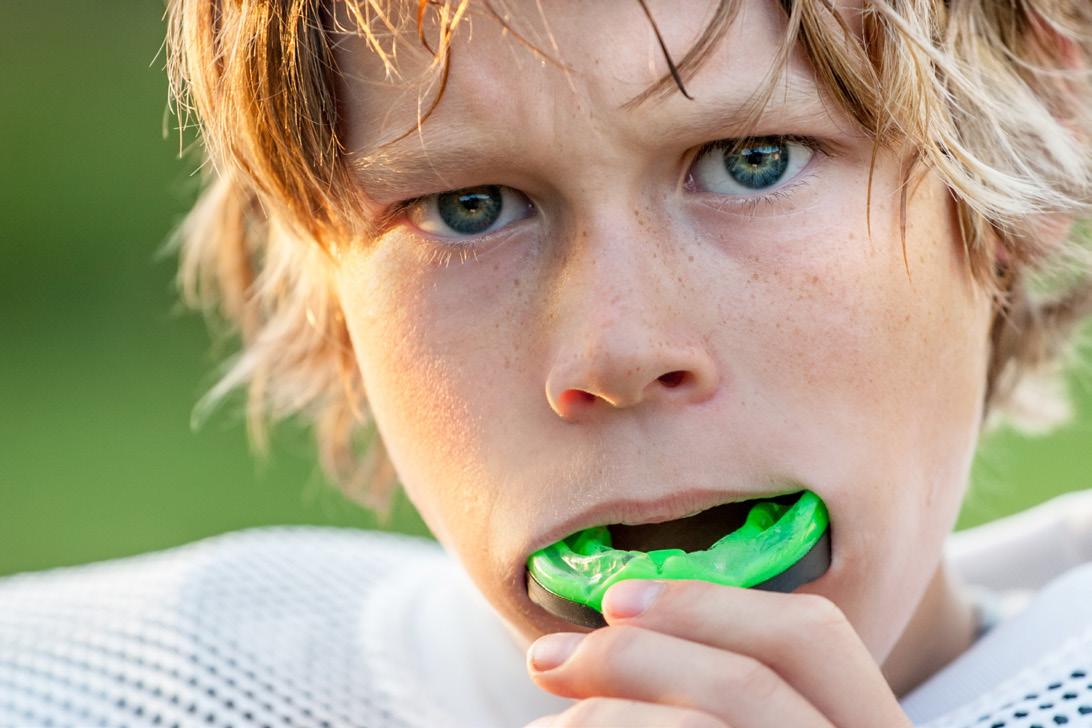
2 minute read
Considerations Regarding Athletic Mouth Guards
www.BlackhawkLivingCA.com @BlackhawkLivingCA #BlackhawkLivingCA
By Richard Anthony, DDS MS -- Blackhawk Orthodontics
The exact origin of the athletic mouth guard protector is unclear. Most evidence indicates that the concept of a mouth guard was initiated in the sport of boxing by Dr. Woolf Krause, a British dentist, around the time of 1892. In the 1940’s and 1950’s, dental injuries were responsible for 24-50% of all football injuries. At that time, the American Dental Association (ADA) began conducting research on mouth guards and soon promoted their benefits to the public.
Mouth guards should be used by anyone—children and adults— who play contact sports such as football, boxing, soccer, ice hockey, basketball, lacrosse, and field hockey. However, even those participating in non-contact sports (for example, gymnastics, baseball) and any recreational activity (for example, skateboarding, mountain biking) that might pose a risk of injury to the mouth would benefit from wearing a protective mouth guard. As a practicing orthodontist, I most often see traumatic dental injuries to the teeth as a result of a blow to the mouth from a baseball or as a result of a fall.

There are three basic types of mouth guards. 1) Stock mouth protectors are pre-formed and come ready to wear. They are inexpensive and can be bought at most sporting good stores. However, little can be done to adjust their fit, they are bulky, make breathing and talking difficult, and provide the least effective protection. 2) Boil and bite mouth protectors also can be bought at many sporting good stores and may offer a better fit than stock mouth protectors. The “boil and bite” mouth guard is made from thermoplastic material. It is placed in hot water to soften, then placed in the mouth and shaped around the teeth using finger and tongue pressure. 3) Custom-fitted mouth protectors are individually fabricated in a dental office or professional laboratory based on your dentist’s instructions. First, your dentist will make an impression of your teeth and the mouth guard is molded of the model using the special material. Due to use of special material and extra work involved, this custom-made mouth guard is more expensive than the other types, it provides the most comfort and protection.
Your dentist or orthodontist can suggest the best type of mouth guard for you. An effective mouth guard should be comfortable, resist tears, be durable and easy to clean, and restrict your breathing or speech. If you had a piece of sports equipment, endorsed by the American Dental Association, that could reduce the risk of sports-related dental injury by 60 times—would you use it?










